2017 was a year of uncertainty and upheaval. As we headed into the year, no one knew what to expect. But as the months went by and the battles mounted, we faced new horrors and found new strength that we didn’t know we had. The tide of the comics industry continued to shift as major publishers faced a barrage of criticism for a variety of reasons, ultimately resulting in the long belated firing of Eddie Berganza at DC Comics and the replacement of Axel Alonso with C.B. Cebulski at Marvel.
And while the war is far from over, still, we persisted. We found time for stories. Comics that inspired us or allowed us to escape. Comics that showed us parts of the world that we never knew existed. We found ourselves laughing hysterically or crinkling pages with our tears. We found rage and sorrow. We found bliss and peace. But most of all, we found love. These are the best comics of 2017.
Alex Lu
 Spinning
Spinning
Cartoonist: Tillie Walden (First Second)
Tillie Walden is one of the most captivating cartoonists of our generation. Her artwork is fluid and entrancing, filled with vivid colors and abstract shapes that keep the eye searching for further meaning between the lines. It’s no wonder that before she started drawing in earnest, she spent years tracing shapes on the ice as well.
In Spinning, Tillie Walden makes a splash with her first mainstream US publishing debut. The book follows her twelve year childhood ice skating career, weaving anecdotes in the rink with stories about her youth and the discovery of her sexual identity. As she writes in the afterward to Spinning, Walden is unconcerned with forming a cohesive narrative out of her life, preferring to let loose ends dangle and allowing readers to extract their own meaning from her words and images. As such, stylistically, Spinning slots perfectly into Walden’s rapidly growing bibliography of work.
 Supergirl: Being Super
Supergirl: Being Super
Writer: Mariko Tamaki
Penciller: Joelle Jones
Inker: Sandu Florea
Colorist: Kelly Fitzpatrick
Letterer: Saida Temofonte
(DC Comics)
I never thought that Mariko Tamaki would come to DC Comics. Through hers and her cousin Jillian Tamaki’s coming of age comic This One Summer, Mariko has proven that she is capable of conveying of what it’s like to come of age as a girl who doesn’t quite fit in, whether it’s because of her interests, sexuality, or as we see in Supergirl: Being Super, something even more extraordinary. In this elseworlds tale, Mariko and Joelle Jones reimagine Kara Danvers as a young midwestern farmgirl, not unlike her cousin Clark. Kara has incredible strength and this one recurring dream of a far away place, but for the most part, she takes her strange powers and strange dreams in stride. She’s too busy living life as a regular teenager, hanging out with her two best friends and prepping for track meets.
However, as her body changes (alien zits!!!) and a tragedy strikes, Kara’s life is thrown into chaos and Supergirl: Being Super reveals itself to be a story that is just as much about grief as it is about coming of age. Through this incredibly rendered and deftly written story, Tamaki and Jones ask the question that all great Supergirl stories ask: If you didn’t come from Earth, what is your place on it?
 My Lesbian Experience with Loneliness
My Lesbian Experience with Loneliness
Cartoonist: Kabi Nagata (Seven Seas Entertainment (US))
When I first started reading My Lesbian Experience with Loneliness, I expected a coming out story. What I found was so much more than that. In her manga, Kabi Nagata doesn’t start out closeted, but completely sexually repressed instead. The resulting story explores her struggle with anxiety in relation to her seeming asexuality and her strained relationship with her parents, whose expectations for her clash with her vision for herself. As someone who also grew up in a repressed environment and ended up struggling with anxiety as well, I empathized strongly with Nagata’s personal journey of self discovery as she figures out the parts of her life that are missing and begins to find purpose within herself.
Perhaps the most powerful things about My Lesbian Experience with Loneliness is that while its narrative arc reflects the typical ones we see in similar stories, Nagata’s autobio manga offers little resolution. Like life itself, her story is ongoing and there are no simple answers. She may no longer have to completely repress her sexuality and may no longer cow to her parents’ expectations for her completely, but these things still weigh on her and deeply color the way she views the world. And in ignoring easy resolution, Nagata reminds us that our ghosts never really go away. We have to summon the strength to grapple with them every day.
Some other favorites include:
- Christophe Chabouté’s Park Bench (Gallery 13), which follows in the vein of Richard McGuire’s Here to tell a story that is just as much about place as it is about people.
- Tom King’s and Mitch Gerad’s Mister Miracle (DC Comics), a haunting and existential exploration of depression colored through a psychedelic lens. An early frontrunner for the Best of 2018 list.
- New Super-Man (DC Comics), written by Gene Luen Yang and drawn by a rotating set of artists– this Rebirth title started off unevenly but ended up finding its footing this year in an exploration of America’s historical Yellow Peril and the development of a Justice League of China that doesn’t just mirror America’s, but comes to have stakes and issues of its own.
- Eric Heisserer’s, Raul Allen’s, and Patricia Martin’s Secret Weapons (Valiant) is a surprisingly fun and refreshing take on what would happen if you mashed up equal parts Runaways and Grant Morrison’s New X-Men.
- John Allison’s and Max Sarin’s Giant Days (BOOM! Studios) is the most addictive comic known to humanity.
- Tom King’s, David Finch’s, and Mikel Janin’s Batman (DC Comics) run also found more solid purchase this year after the gorgeous “Rooftop” storyline, drawn by Mitch Gerads, brought Batman’s relationship with Catwoman back to the forefront. As the Cat and the Bat danced with one another, they eventually found themselves engaged and in the process, we found ourselves such as well.
Kyle Pinion
 Zegas
Zegas
Cartoonist: Michel Fiffe (Fantagraphics)
The mastermind behind the best one man comics showcase Copra, Michel Fiffe, got a chance to treat readers to some of his earlier, out of print for years and years, work through Fantagraphics’ new collection of the adventures of Emily and Boston Zegas; a pair of siblings who get into a number of mundane adventures in the bizarre, alien landscape they call home. Where Copra allows Fiffe to exercise his superhero influences, Zegas is where he incorporates a whole melting pot of everything else that gets this ever creative wellspring of a mind flowing. From a recent twitter thread on the subject this included wide-ranging cartoonists like Cliff Sterrett, Gilbert Hernandez, Wallace Tripp, Klaus Janson (gotta keep a little bit of the capes in there), George Grosz, and Lorenzo Mattotti.
It’s a wonderful little package to behold, and I’m consistently in awe at just how effortlessly Fiffe can bend my eye to the panel. I hope he returns to this world someday with all the lessons and exercises of his recent success fresh in mind.
 Hellboy: Into the Silent Sea
Hellboy: Into the Silent Sea
Writers: Gary Gianni & Mike Mignola
Artist: Gary Gianni
Colorist: Dave Stewart
Letterer: Clem Robins
(Dark Horse)
Given that these are my picks, it’s hard to imagine I’d ever let a year go by without some recognition for the Mignolaverse. While it’s incredibly tough to follow up the gorgeous and poetic Hellboy in Hell, Mignola did drop a nice stunner earlier this year with the latest OGN set in that world, Into the Silent Sea. Teaming with Gary Gianni, an artist that’s no stranger to this kind of ghostly material, the pair craft a wonderful epilogue to the classic Hellboy story “The Island” that finds our solemn hero adrift from the wreckage of said haunted place and taken captive by the very ship that approaches him at that story’s end.
Mignola has said in interviews that he held onto this story for Gianni to one day collaborate on with him (and Gianni contributes a large bulk of the dialogue as well, with Mignola assists), and one can see why. It’s a eye-popping work, full of mood and tone and a torrent of crustaceous creatures that Hellboy and the crew must battle off the ship. It’s a brief tale, one meant more for pouring over its impressive nautical design and appreciating its fine detail than waiting for some big revelation regarding its purpose in the greater mythos. But holy cow, what a fabulous addition to that mythos all the same!
 X-Men: Grand Design #1
X-Men: Grand Design #1
Cartoonist: Ed Piskor (Marvel Comics)
I can’t remember the last time I actually cared about the X-Men (probably during the Morrison/Quitely/Milligan/Allred days), but with X-Men: Grand Design, all of those great memories and the affection I held for the franchise as a kid came rushing back to me. You see, even though it’s only one issue deep at the time of this article’s publication and I always promised myself I’d never do a Best of the Year with something that’s only had a short shelf-life, the vitality that Ed Piskor has imbued into the dormant X-Men franchise cannot be understated.
Taking the same approach to the X-Men’s super convoluted history that he did with the birth of hip hop in Hip Hop Family Tree, Piskor streamlines the origins of mutantkind, the parallel journeys of Xavier and Magneto, and the recruitment of both the X-Men and the Brotherhood of Evil Mutants, while incorporating every wrinkle and aspect in a way that’s approachable for the new reader and refreshing for the long-time veteran. Additionally, Piskor structures each page like a great Sunday strip as well, so you can take the book at any pace you’d like, but it rewards a slow reading where you can luxuriate in the gorgeous artwork and the multitude of references to the entire body of X-Men comics and other related media that inform this early chapter in the life-cycle Marvel’s merry band of mutants. I’ve read a lot of X-Men comics in my life and Piskor’s deep research dug up a few things I’d never seen in my fairly extensive reading experience and locking all these details together to create a sense of clarity around the most convoluted characters in all of comics makes it easily one of 2017’s most essential reads.
George Carmona
 Victor LaValle’s Destroyer
Victor LaValle’s Destroyer
Writer: Victor LaValle
Artist: Dietrich Smith
Cover Artist: Micaela Dawn
(Boom! Studios)
LaValle brings the Frankenstein Monster into the modern world of #BlackLivesMatter. Having been isolated from the world for close to two hundred years, the Monster returns to destroy humanity when he sense that there is another being like him, this being is the slain son of Victor Frankenstein’s descendant Dr. Baker. In her grief she uses her immense intellect to cheat death bring her son back. Smith’s interior work brings this world to life with vibrant colors and solid line work, while Dawn’s covers draw you in with a modern style that conveys the emotion of the story. A challenging book that covers a bunch of societal issues.
 Robotech
Robotech
Writer: Brian Wood
Artist: Marco Turini
Cover Artist: Nick Roche
(Titan)
I recently started watching the original Robotech cartoon and I’m struggling with it. Not so with the comic, they bring a very fresh feel to this very dated story, in the same fashion that Battlestar Galactica did with its re-imagining. Wood and Turni take this nostalgic property and gives it modern sensibilities to make it in our world today.
 Batman/Shadow
Batman/Shadow
Writers: Steve Orlando & Scott Snyder
Penciler: Riley Rossmo
Inker: Riley Rossmo
Colorist: Ivan Plascencia
(DC Comics/Dynamite)
The Shadow is one of the sources that went into the creation of Batman, 75 plus years ago, and Orlando and Snyder work him into the Batman Mythos in such a way that I wish it were DC continuity. I was skeptical at first, the two mains are very similar in their mission for justice, with some major ideological differences, but Batman/Shadow is a strong detective story with some fantastical aspects, and beautiful art by Rossmo and Plascencia that make for a great read.
Todd Allen
 Batman / Elmer Fudd Special #1
Batman / Elmer Fudd Special #1
Writer: Tom King
Artist: Lee Weeks
Colorist: Lovern Kindzierski
Letterer: Deron Bennett
(DC Comics)
The best comic I read that was published in 2017 might be the most unlikely thing to make the list. Who would have thought that Batman / Elmer Fudd Special #1 was going to be good, let alone great? It sounds like an autopilot programming stunt from a corporate synergy branding meeting. (50-50 Dan DiDio is reading this and wondering how I found out about that meeting.)
Tom King crafted a deadpan noir crime tale with Elmer Fudd as a hitman in Gotham. There’s an extra jaw dropper to the plot if you’re up on your ’70s Batman that comes in from left field and pulls the rug right out from under you, too. Yes, he invented the subgenre of Fudd Noir.
Not enough praise can be heaped on Lee Weeks. The task of merging Looney Tunes characters into the world of men (and Batman) sounds nearly impossible to pull off in a noir flavor. He pulled it off. Flawlessly.
Story and art had to compliment each other or this comic would have come crashing down in flames. And it worked. It worked better than anyone could have had reasonable expectations for it to.
The degree of difficulty to pull this off was absurd, but what did we get? The Comic of the Year.
Too bad your shop didn’t order enough, but you can’t blame them for not seeing this coming.
Nicholas Eskey
 Spill Zone
Spill Zone
Writer: Scott Westerfield
Illustrator: Alex Puvilland
(First Second)
Her parents missing, her sister a mute who constantly clings to an odd doll named “Vespertine”, and her hometown a disaster area marked as “the Spill Zone,” Addison Merrick’s tries to keep together what remains of her little family by the assistance of an unknown benefactor. For her part, Addison must consistently slip pass the patrols that guard the roads into town and risk her life by documenting the strange world that it has transformed to: A world where physics and reality defy all logic and reasoning; Animals transformed into strange and dangerous beings and surviving humans have become something resembling floating puppets. Will Addison ever stumble upon the source of the disaster and the fate of her parents, all while keeping herself alive?
IDW never fails to entertain or delight, whether it be their books for kids or young-adults/adults. Released in May of 2017, Spill Zone offers a thriller wrapped in a mystery. The visuals are engrossing, with their use of panel placement and striking colors adding to the strangeness that is Spill Zone. For young-adults and adults alike who enjoy a good mystery, I recommend this as a must read.
 Spencer and Locke
Spencer and Locke
Writer: David Pepose
Artist: Jorge Santiago Jr.
(Action Lab Comics)
On the outside, Locke appears to be a typical detective trying to keep the “mean-streets” clean with a little help from his partner, Spencer. In reality, that partner is an imaginary friend in the form of a stuffed leopard and the streets are filled with the demons of Locke’s past. Into the investigation of the death of a childhood friend and an elementary school teacher, Locke finds that something even more sinister lies just below the surface, and that somehow it involves him too.
Spencer and Locke reminds me of the old Calvin and Hobbs comics, where Calvin is a perpetually young and imaginative boy who is always getting into mischief with his stuffed tiger, Hobbs. What I love best about Spencer and Locke though is that it goes further than the sunshine and smiles, showing what just might happen to that adventurous boy when he grows up amid a difficult home life. Despite the demons of his past, Locke never lets go of his childhood wonder, showing just how important an imagination is in surviving the realities of life. Crime, drama, grit, and a good deal of imagination are all blended into this comic. Best of all, a sequel to Spencer and Locke is expected sometime in 2018.
AJ Frost
 Cartoon Clouds
Cartoon Clouds
Cartoonist: Joseph Remnant (Fantagraphics)
There’s really no other way of avoiding the fact that the Millennial generation got royally screwed. Certainly, I remember graduating from Columbia University with a Master’s degree and barely any job prospects. It was an absolute low in my life: Overeducated and underemployed. My professional life is on much studier ground now, but I thought back to those perilous days while reading Joseph Remnant’s piquant meditation on millennial angst. At its core, Cartoon Clouds is about not selling out, not giving away your ideals and dreams for a quick buck. In an ideal world, we use the skills we’ve cultivated—through hard work and perspicacity—to ensure that our dreams come to fruition. After we get over this fantasy, we are hit with the cruel reality that other people usually couldn’t care less how hard we’ve worked unless there is a reciprocal benefit. Seth Fallon, the protagonist of Cartoon Clouds, is an artist fresh out of school yearning to make something of himself, but every step of the way is hit by the indignities of seeking out low-paying jobs just to make ends meet. Meanwhile, other friends use their skills to create viable careers. It’s an all-too-relatable story. Remnant, for his part, uses Cartoon Clouds as a reflection and a challenge to all those who internalize self-pity for not moving onto the next stage of their life quick enough. He gives great voice to an existential struggle that millions of people are wrestling with right now. A powerful and evocative comic for the current times.
 3 o’Clock Club: School’s Out… Of Control!
3 o’Clock Club: School’s Out… Of Control!
Writers: Jordan B. Gorfinkel & Butch Hartman
Artist: Erez Zadok
(Lion Forge*)
There’s a lot to be said for vibrancy and character and that’s what this book has in abundance. 3 o’Clock Club: School’s Out… Of Control! is a wonderful all-ages comic that was released under the radar this year, but is a perfect amalgamation of fantasy, Saturday morning cartoons, and steampunk-inspired adventure. Writers Jordan B. Gorfinkel (aka GORF) and Butch Hartman, create incredibly imaginative situations where the world is imperiled every day after class, and it is up to regular kids—many of them outcasts and loners—to join together and go above and beyond to save their schoolmates… and the world. Gorf and Hartman are a formidable team, complementing each other with their diverse approaches to storytelling. Both of them seek to understand the inner workings of the protagonists, delving deep into the recesses (see, a pun!) of each character’s psyche to produce a comic that delivers the laughs while preserving the heart. What makes the writing even stronger is the steady hand of Erez Zadok, an Israeli cartoonist and illustrator, in his American comics debut. As I noted in my review earlier this year, we should keep our eyes on Zadok. He has a true talent for navigating bombastic action sequences with moments of subtle melancholy. And indeed, the strength of 3 o’Clock Club comes from its inner ability navigate attention placed on action and technology while also being a quieter story about growing up and finding acceptance in a cacophonous world.
 Kobane Calling: Greetings from Northern Syria
Kobane Calling: Greetings from Northern Syria
Cartoonist: Zerocalcare (Lion Forge*)
The Syrian Civil War is nothing but a tragedy, a horror, and this generation’s greatest humanitarian crisis. A never-ending beauracratic soup of terror and apathy, hundreds of thousands of innocent people have been killed and displaced for reasons that long ago lost any semblance of sense. Kobane Calling: Greetings from Northern Syria doesn’t concern itself with exploring the origins of the conflict. Rather, Italian cartoonist Zerocalcare documents the equally vicious and messy influence of the Islamic State using the discord of war to seize power, subjugate and brutalize local populations under their fundamentalist vision of Islam. Zerocalcare’s storytelling style is disarmingly personal, ever curious, and even a bit self-effacing. Any casual reader of comics will recognize the influence of Sacco or DeLisle (placing oneself in a dangerous area of the world and reporting what is going on), but Zerocalcare’s embedding with Kurdish resistance fighters feels particular present and clear-headed. This is an unusual, but still utterly gripping work, and one that disarms readers by showing smiling Peshmerga recruits in one scene and the ruins of battle in the next. An essential read of 2017.
 Monet: Itinerant of Light
Monet: Itinerant of Light
Writer: Salva Rubio
Artist: Efa
(NBM)
Go into any major art museum in the world and there is a good chance you will see a Monet hanging on the wall. His style is so easily recognized and adored the world over that a regular admirer of the arts would have to deduce that Monet’s genius was appreciated within moments of him putting brush to canvas. Alas, this is never the case. Instead, writer Salva Rubio and artist Efa present the life of Monet as a parade of failures and misses before becoming a historically-appreciated innovator of the form. The first thing that readers will appreciate is Efa’s luscious art that closely hews to Monet’s impressionistic aesthetic. Colors swirl as the moments behind some of modern art’s greatest moments are presented through fresh eyes. Rubio is no slouch, writing a biography of Monet that shows his triumphs and nadirs in equal measure. If anything, this is certainly one of the most visually stunning comics released this year, and another worthy addition to an ever-growing number of comics dedicated to exploring the lives of the masters.
 Marx, Freud, & Einstein: Heroes of the Mind
Marx, Freud, & Einstein: Heroes of the Mind
Writer: Corrine Maier
Artist: Anne Simon
(Nobrow)
Have any three figures disrupted so much about what how we consider the world than the likes of Karl Marx, Sigmund Freud, and Albert Einstein? Indeed, as Jacobo Timerman, a Jewish newspaper editor and vocal dissident of the Argentinean junta during the days of The Dirty War, recounted during an interrogation, he was told that: “Argentina has three main enemies: Karl Marx, because he tried to destroy the Christian concept of society; Sigmund Freud, because he tried to destroy the Christian concept of the family; and Albert Einstein, because he tried to destroy the Christian concept of time and space” (Prisoner Without a Name, Cell Without a Number). In the recently collected comics anthology Marx, Freud & Einstein: Heroes of the Mind, French psychoanalyst, public intellectual, and writer Corinne Maier and artist Anne Simon explore the complex epistemologies and private struggles of the eponymous trio. Originally a set of three separate works, Maier and Simon set out to explore the inner worlds of these historical figures, revealing what made them unique and indispensable to the modern understandings of what it means to be a human being. The aesthetic choices here—proudly French—lend themselves to the engaging dialogue, which never feels condescending nor deliberately oblique. There’s almost a sense of childlike wonder within the drawings. The material is playful and cartoonish, vibrant and thought-provoking. This book is a visual treat from start to finish.
 Shrinkage
Shrinkage
Writer: Rob Kutner
Artist: John Lucas
(Farrago Comics)
Shrinkage is the quintessential comic—and only logical explanation—for our political times. In a world where we greet each day with yet another crisis stirred up by hubris, incompetence, and bigotry, the thought that alien nanobots controlling the President’s brain seems like a relief from the norm. Sadly though, reality is much more mundane. Shrinkage, truth be told, is a sci-fi/comedic tour de force that really uses politics more as the grounded mechanism to explore the limits of what happens when the most powerful individual in the world goes completely insane. Coupled with Kutner’s writing is John Lucas’ grotesque (but funny!) artwork. It’s Lucas who helps ensure that every story beat is more outrageous than the last. The bulk of Kutner’s humor comes from his particular passion for the intricacies neuroscience juxtaposed against a broad, Kubrick-esque political farce. Indeed, every norm is upended; systems that have been put in place are disrupted; nerds and jocks unite for a common mission of kicking ass against invaders hellbent on destroying the world. It’s a beautiful sight… as long as it stays confined to the pages of comic books and not to the occupant of the Oval Office. Excuse me now, before I roll up in a ball while watching CNN with Shrinkage only inches away on my nightstand…
*Book originally published by Lion Forge, LLC, whose sister company Syndicated Comics, LLC, owns the Comic Beat.
Phillippe Leblanc
Cartoonist of the year: The standout cartoonist this year was Carta Monir. The word I come back to often to describe her work is bittersweet. Her comics have the perfect mixture of elegance, melancholia and inner turmoil. She whispers these dark, traumatic stories with every panel and you can’t help but to lean closer to take it all in. There’s this palpable sense of unease with the world, that this life is bleak. And yet, her colours and the tone she uses is delicate and gentle. It makes her stories all the more poignant. This is helped by the way she paces her stories, always allowing enough time to create a sad sense of pacing to create a sorrowful atmospheric work. Her work brought me to tears on two occasions this year. Lean in and you’ll feel it too.
 Sound of Snow Falling
Sound of Snow Falling
Cartoonist: Maggie Umber (2dcloud)
No comics this year were as perfect as Maggie Umber’s Sound of Snow Falling. It is a triumph of storytelling. Sound of Snow Falling is a wonderfully illustrated tale of two great horned owls in their natural habitat through the winter. The thorough research of Maggie Umber allows this work to read like a documentary piece. Umber spent years thinking about what that graphic novel would look like, researched and matured this idea and worked on it for four years before finally seeing the light of day. The result is a graphic novel that shines through its wonderfully painted pages, perfectly paced and beautifully coloured shades of blue, red and grey. As you read, you develop this deep empathy for the owls. Sound of Snow Falling captivates you from the first page all the way to the very last painted page. I’ve interviewed Maggie back in March and she was kind enough to give us a lot of information on her graphic novel.
 Stages of Rot
Stages of Rot
Cartoonist: Linnea Sterte (Peow Studios)
: Stages of Rot effortlessly creates a fully realized world just odd enough for us to feel destabilized, yet familiar enough to understand it. It’s about how tragedy creates opportunity, how change is the only constant in this world and it’s about how the cycle of life works, sometimes in mysterious ways, but always with a purpose. It’s a mostly wordless exploration of growth, decay, evolution and divine occurrences all beautifully illustrated by Linnea Sterte. I’ve reviewed it earlier this year and I encourage you to seek this graphic novel out. The books published by Peow Studios aren’t particularly easy to find, but they are well worth seeking out.
 Mirror Mirror II
Mirror Mirror II
edited by Julia Gfrörer & Sean T. Collins (2dcloud)
In a year that many have found bleak and depressing, Mirror Mirror II managed to channel this energy into one of the most riveting visual experience of the year. There’s no such thing as hope or happy endings in this book, it is simultaneously one of the most depressing read of the year and the best horror comics anthology available. What Julia Gfrörer and Sean T. Collins assembled is an anthology with a singular vision and theme. The contributors focus on the idea that horror comes from the violation of social rules, the violation of trust, in ourselves, in others. It explores that intersection between horror and sexuality, in innovative ways. It understands that we break each other and rip each other apart in this world. It’s a reminder of the bleakness of our world. It’s not for everybody, but the work of Lala Albert, Clive Barker, Simon Hanselmann, Aidan Koch, Laura Lannes, Céline Loup and the other contributors is a standout in an otherwise miserable year.
 Poppies of Iraq
Poppies of Iraq
Created by Brigitte Findakly & Lewis Trondheim (Drawn & Quarterly)
Brigitte Findakly and Lewis Trondheim delivers a poignant and necessary portrait of the author’s childhood in Iraq. It retraces the life of Brigitte Findakly from her childhood in Iraq to her eventual move and adulthood in France. We see the ever increasing hardship her father’s dentistry practice faced in Iraq and the hardship in establishing his own career in France. We witness the difficulty of her mother to adjust to the constant shifts in the Iraqi customs over time and the toll it takes on her and her family. Trondheim’s characters are deceptively simple, but manage to convey a great depth of emotions, particularly in the heavier parts of the story. Poppies of Iraq shine in how it distills the history of modern day Iraq to show how taxing the changes became on the people living through it. It is a fascinating book and a good companion to Riad Sattouf’s The Arab of the Future.
 Mirror
Mirror
Cartoonists: Hwei Lim & Emma Rios (Image Comics)
Mirror is one of the best comic Image is publishing right now and possibly one of the best science-fantasy title available on comic stands. The collaboration between Hwei Lim and Emma Rios has produced a fantastically engaging book. Mirror is essentially the inhabitants of a terraformed asteroid and the struggle between the mage scientists of Synchronia and the hybrids inhabitants of that world. 2017 picked up where the story ended last year as survivors of the colony leave the asteroid and begin their journey home, but their journey is difficult and not all as it seems. It’s one of the most beautiful comics published by Image Comics, the pastel colours of Hwei Lim and the story of Emma Rios combines in this wonderfully engaging and complex whole that makes the wait between every issue nearly unbearable.
 The work of Mélodie Vachon Boucher
The work of Mélodie Vachon Boucher
(Trois carrés de chocolats, Livre de peine, Chamade, La femme invisible, Le meilleur a été découvert loin d’ici)
In the year of #MeToo, the comic books that illustrated the toll sexual assault takes on women the best was perhaps Mélodie Vachon Boucher’s Trois carrés de chocolats (Three chocolate squares). Published late in 2016, Mélodie describes a ritual she came up with to deal with the trauma of sexual assault. Told tenderly, slowly and deliberately, you feel the impact and that resulted from the assault. It’s a devastating piece. She’s interested in exploring the lives of women and the graveyard of innocence that often surrounds them. She confronts fear, pain and scars to unlock a certain understanding of life and how experiences mold us into who we are. Her other books explored depression and a range of other everyday traumas often left unaddressed. Her work is sparse, but cut deep.
 Une longue canicule
Une longue canicule
Cartoonist: Anne Villeneuve (Mecanique Generale)
Anne Villeneuve’s stepped away from children’s book illustration to make her first graphic novel Une longue canicule and we are all the better for it. In Une longue canicule, a woman from a remote community moves to Montreal. The loss of her brother broke her parents apart and after many years, nobody has fully healed. She wants to put distance between herself and this loss by starting anew in Montreal. The book revolves around the fallout of an incident where she’s catcalled in the streets and followed by a strange and dangerous looking man and quickly realizes that he’s wanted for sexual assault. She meets a police officer, befriends the old lady across the hall and becomes increasingly paranoid of encountering the dangerous man again. While the premise seems at first heavy-handed, Villeneuve’s execution of the book is all about the small moments. She uses the heatwave and the encounter to explore how loneliness affects us and holds our lives and society.
Best webcomics of the year
The world of web comics is large and I can’t follow everything, but three things grabbed my attention.
The four panel diary comics of Meredith Park. 2017 was a remarkably depressing year. Twitter in particular has become a cesspool of pain and misery. However, the highlight of my year online were the four panel comics of Meredith Park. Park has been publishing those daily (or close to) and each of them has been a delight. Normally those comics are stand alone, but some continue over two or three comics. They are introspective and light, just as they can be melancholic and dark. They’re a beacon of tenderness in the cesspool that has become Twitter and it’s a wonderful thing to see.
The Nib’s daily comics: 2017 has been a year undeniably dominated by American politics. Even though I’m Canadian, we keep hearing about the seemingly unstoppable American political news cycle. Comics have been a good way to add context and talk about politics since the beginning of the art form and The Nib took this to new heights this year. Whether it was the weekly updates from Tom Tomorrow, or the satire of Jen Sorensen, The Nib became an incredible source of political cartooning. The Nib’s comics can sometimes be hit or miss, but they have new political comics five days a week, which means the lesser ones are quickly replaced by better ones. Some of those were truly remarkable, so much so that when I went to make a list, the really astounding ones were too many to list.
Mana by Priya Huq: Well, I had placed this comic in my best of the year in 2016, not so much as the best of 2016, but as a comic to watch. Priya didn’t disappoint in 2017. Her comic picked up steam and is leading to something quite satisfying. I liked how she uses water colour to depict the story of a swordsman travelling towards the ocean after a dream. I like how slow and deliberate it is, and how the comic is permeated in water and rain. Huq also subtly changed the colour palette throughout the year to beautiful effect. My only issue with it might be that the release is quite slow. I’m fine with waiting for quality though, and am eagerly awaiting the next chapters in 2018.
Maggie Umber
Guest Contributor
 Wet Earth
Wet Earth
Cartoonist: Lala Albert (Sonatina)
The best comic I read in 2017 was Wet Earth by Lala Albert and published by Sonatina. Wet Earth is wordless, which I love. It’s the story of a fairy creature living amongst the nature of a salt marsh. I enjoy the feeling of scale. Drops of water are giant globes, tiny flowers become large chairs and small raccoon paws become enormous predatory things to fear. While this is a work of fiction, Lala’s close observations of plants, animals and the ecosystem are marvelously intriguing and scientifically aware!!! I also take great pleasure in the book’s sparse design and the fact that it was printed in a limited handmade edition by Scott Longo, the publisher.
Heidi MacDonald
 My Favorite Thing is Monsters
My Favorite Thing is Monsters
Cartoonist: Emil Ferris (Fantagraphics)
An unikely hit from an unlikely cartoonist. Emil Ferris’s sui generis story about a Chicago girl’s obsession with monsters and a neighbor’s murder has the year’s most unusual art style–dense, intense ballpoint pen image collages on ruled paper, the revealing diary style writing winding its way through the art. Once this would have been some oddball comic a few people raved about, but thanks to mainstream support (Publishers Weekly was an early and loud champion), and a savvy marketing campaign, this book overcame shipping woes to become a bestseller. How does that happen? Oh yeah, it’s a work of unique and transcendent genius – one that touches on the racial and sexual issues that preoccupied the year.
 Boundless
Boundless
Cartoonist: Jillian Tamaki (Drawn & Quarterly)
Tamaki drew a timeless YA classic with This One Summer, subverted it with Super Mutant Magic Academy, and then jullienned it all with this extremely uncomfortable collection of short stories. Ironic detachment masks the emotional turmoil of modern life and technology, to often devastating effect, as Tamaki’s protagonists – usually women – flounder through the search for beauty, love, memory and a safe space just to be. The miracle of Tamaki’s art is how every image is a fresh invention, a fresh viewpoint. The comics short story has come of age in the last few years as a literary format all its own, and Tamaki is in the forefront. Yet this book pairs well with…
 Sex Fantasy
Sex Fantasy
Cartoonist: Sophia Foster-Dimino (Koyama Press)
Another gut punch of storytelling. Published over a period of years as online comics then mini comics, Foster-Dimino grows exponentially through these ten stories. The one about a tiny little woman who deals with life in a rather rigid way who faces horrible hardships (a bus trip! snow!) to see her long distance boyfriend is almost unbearably tense. The last panel payoff always brings a tear to my eye no matter how many times I read it thanks to Foster-Dimino’s flawless drawing.
Boundless and Sex Fantasy both collect stories (mostly) originally published online. That’s where so much of the action is these days.
Anti-Gone and Iceland
Another pairing that illuminates by comparison. Two surreal travelogues in comics format. Willumsen’s fantasy involves two tourists, Spyda and Lynxa, who explore an island that turns into a futuristic city or an apocalyptic nightmare depending on what drugs they’re taking. Yokoyama, whose abstract trance comics use lines to invoke mood and sensation, here outlines a narrative (unusual in his work) where people wander an island looking for someone. The same idea taken to extreme directions. Perhaps this can be a whole new genre of comics, to replace superheroes? Both Retrofit and (especially) Koyama Press killed it in 2017.
 Black Hammer
Black Hammer
Writer: Jeff Lemire
Artist: Dean Ormston
Colorist: Dave Stewart
Letterer: Todd Klein ]
But there’s still life in the old superhero, or at least the exciting rebirth of a talented artist. In Ormston, Lemire has found the perfect partner for his long gestating rural superhero epics. Ormston doesn’t let the creepy side of things fall out of sight for a minute, making Black Hammer a meta narrative about what happens after the adventure in the event comic goes horribly wrong. Perhaps ironically, this has become a whole line of comics from Dark Horse, with one shots, guests issues and spin-offs. As long as it retains the weirdness of the original – or has art by the superb David Rubin – I’m on board.
Other favorites of the year:
- House of Women – Sophie Goldstein, Fantagraphics – The film Black Narcissus is reimagined – as SF. This will pair will with Tillie Walden’s On a Sunbeam which has a different origin but some similar themes.
- The Best We Could Do – Thi Bui, Abrams. A superb addition to the shelf of comics memoirs, Bui’s art is marvelous but it’s her resonant, perceptive writing that elevates this.
- Everything is Flammable – Gabrielle Bell, Uncivilized – Arguably Bell’s best book, in a career with a lot of contenders.
And these four, ably covered above:
- Mirror Mirror II – Edited by Sean T. Collins and Julia Gfrorer, 2DCloud – This book should win all the design awards for 2017. It’s as magnificent, as the contents are (purposely) horrific.
- Spinning – Tillie Walden, First Second
- My Lesbian Experience with Loneliness, Kabi Nagata, Seven Seas
- The Nib, Various
So many of the best comics of 2017 were by women that the four male cartoonists I mentioned above almost feel like tokens. Just a thought: if more women had been allowed to make comics in the 50s and 60s the artform would have taken off a lot sooner.


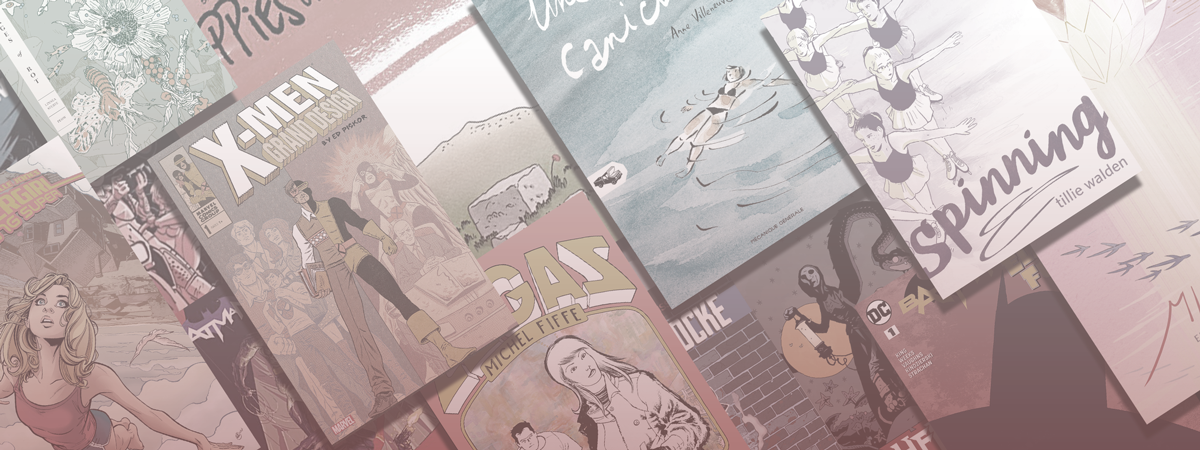
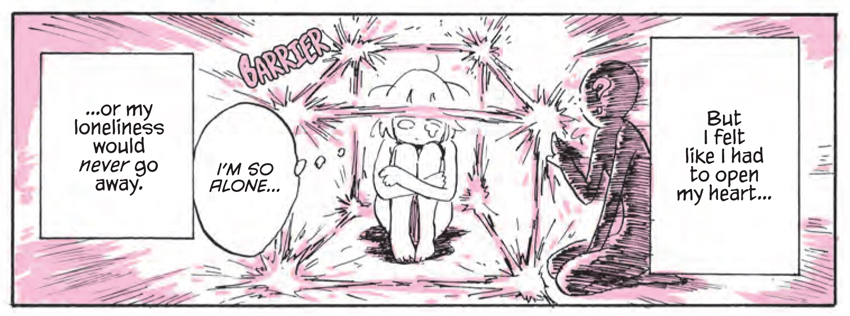
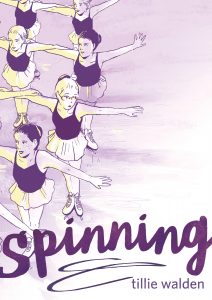
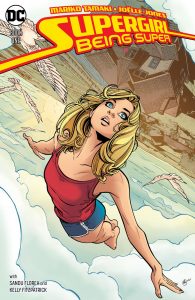

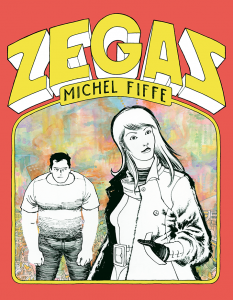
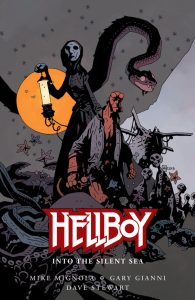
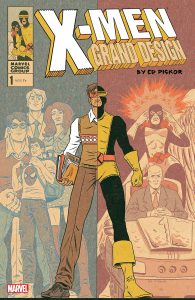
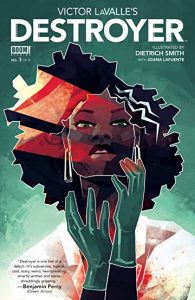
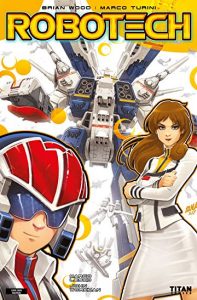
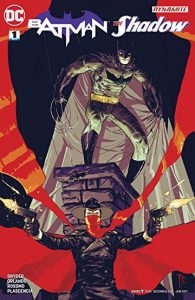
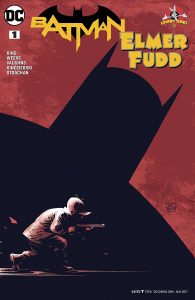
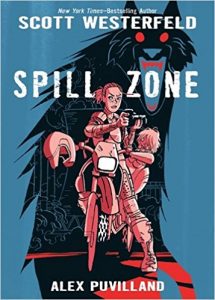
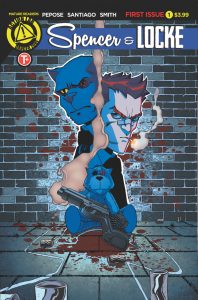
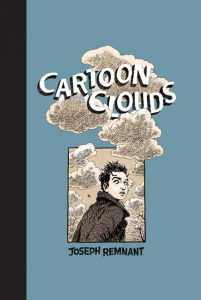
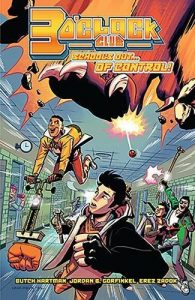
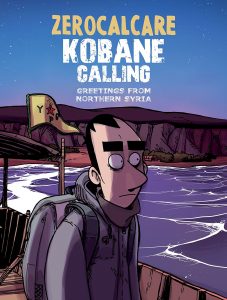
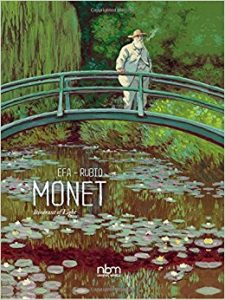
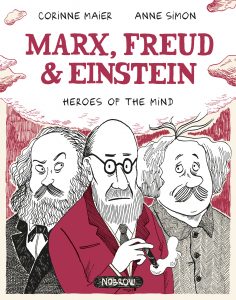
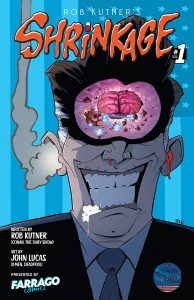
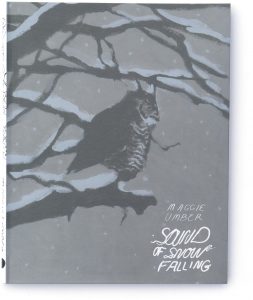
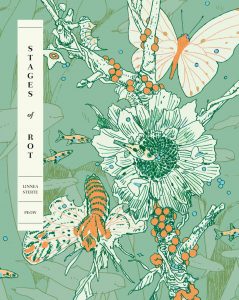
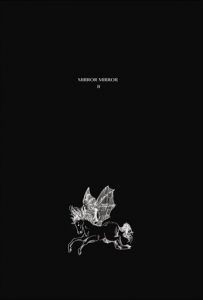
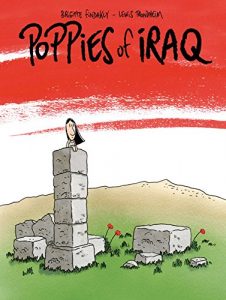
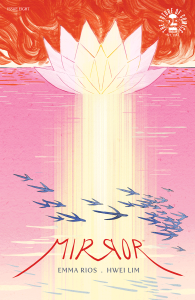

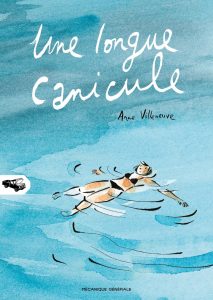
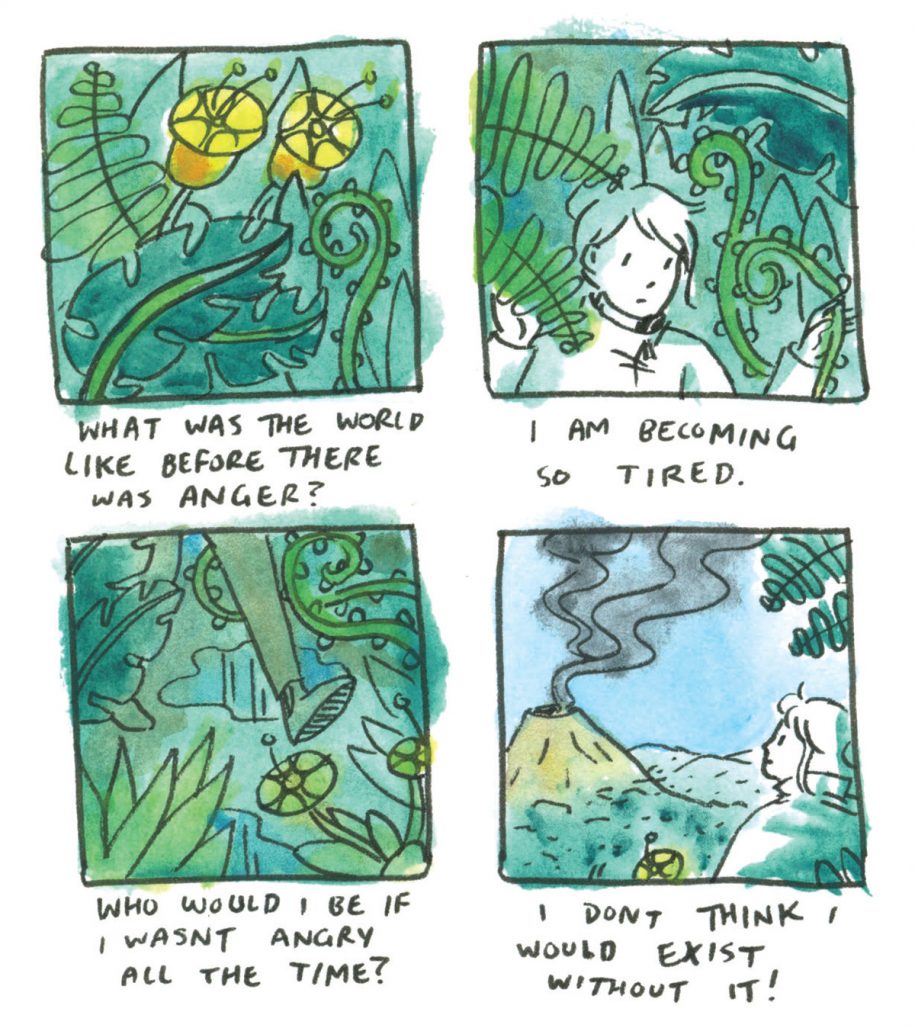


 My Favorite Thing is Monsters
My Favorite Thing is Monsters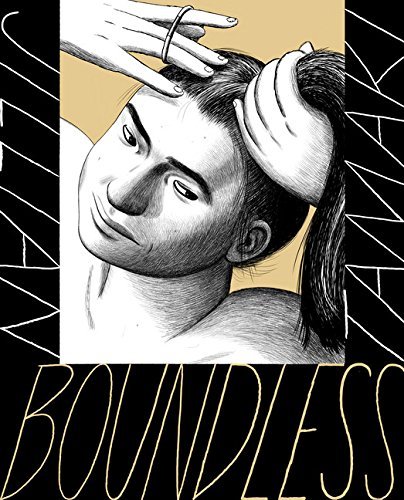 Boundless
Boundless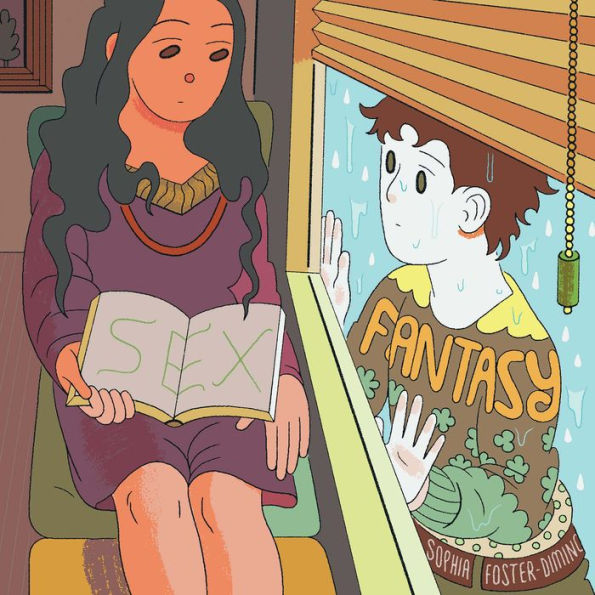 Sex Fantasy
Sex Fantasy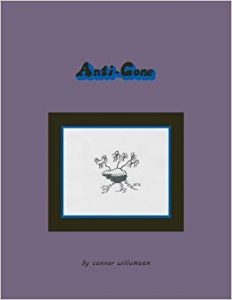
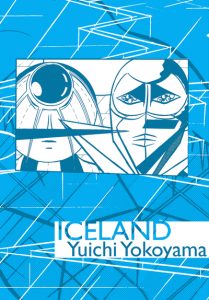
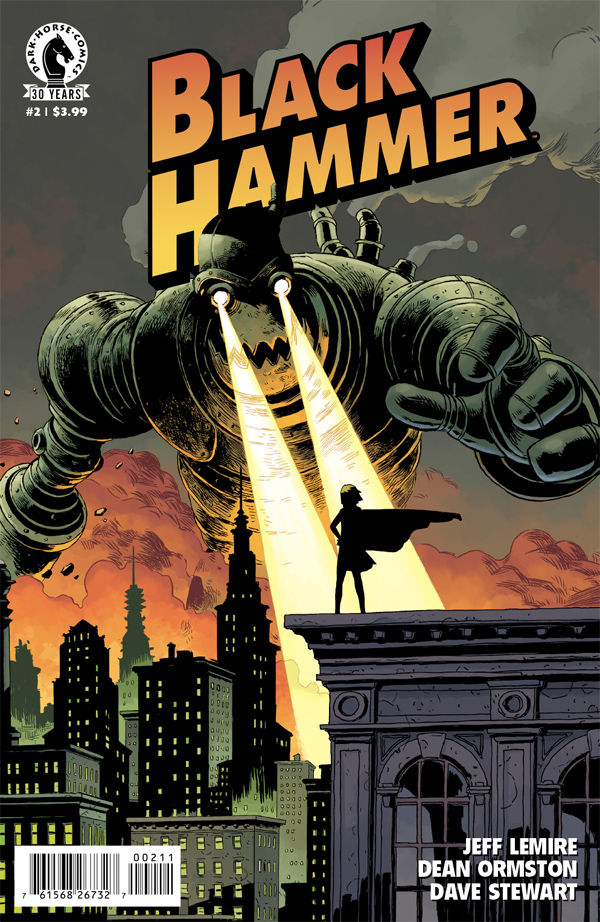 Black Hammer
Black Hammer

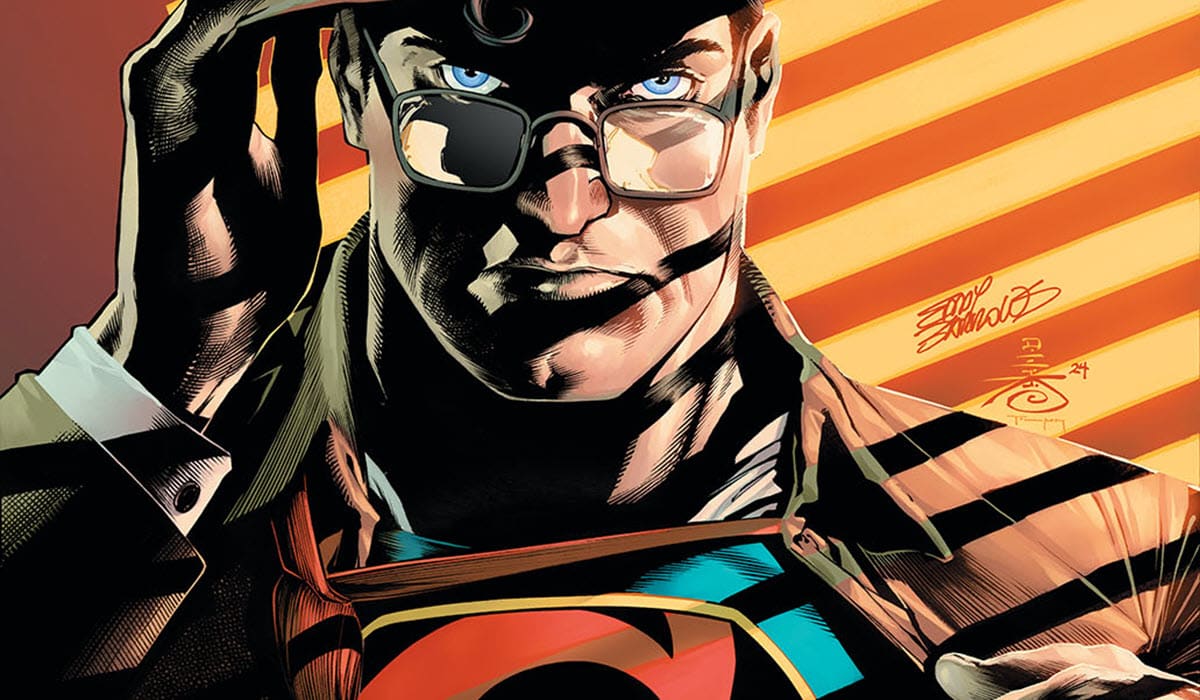



Victor LaValle wrote a comic and this wasn’t huge news???
I know what I’m getting next!
Really happy to see Secret Weapons make the list. Just the art alone is jaw dropping.
Sad to see 4 Kids Walk into a Bank missing. That’s my favorite from this past year.
Wish Copra made the list. I see Zegas there, but Copra keeps hitting the highest level of excellence.
Chris,
I considered putting Copra #31, but I’ve put up Copra the past two years and I thought Zegas was really worthy of mention for another side of Fiffe’s craft.
Comments are closed.